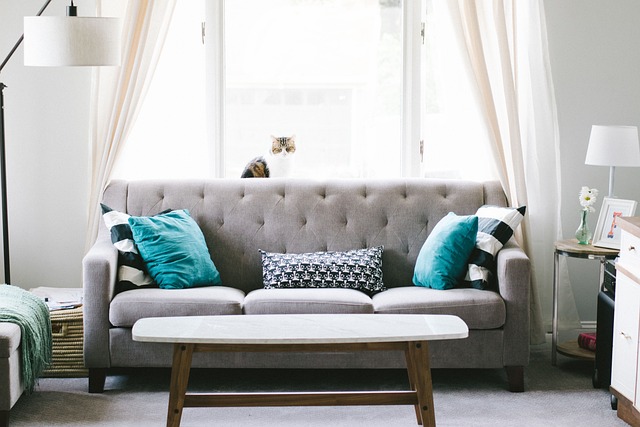What To Know About Bank Repossessed Furniture & Fixtures Before Moving Forward
Bank repossessed furniture and fixtures can offer unique opportunities for individuals and businesses looking to acquire quality items at potentially lower prices. This article explores the world of bank repossessed furniture and fixtures, providing essential information for those considering this option. From understanding what these items are to weighing the pros and cons, we'll cover key aspects to help you make an informed decision.

What are Bank Repossessed Furniture & Fixtures?
Bank repossessed furniture and fixtures are items that have been reclaimed by financial institutions due to loan defaults or business closures. When businesses or individuals fail to meet their financial obligations, banks may seize assets, including furniture and fixtures, to recover their losses. These items can range from office furniture and equipment to retail store fixtures and even residential furnishings.
The types of items typically available as bank repossessed furniture and fixtures include:
-
Office desks, chairs, and filing cabinets
-
Conference room tables and seating
-
Retail display cases and shelving units
-
Restaurant equipment and seating
-
Hotel furniture and decor
-
Industrial machinery and equipment
Understanding the nature of these items is crucial for potential buyers to assess their suitability and value.
How Does Furniture Become Bank Repossessed?
Furniture and fixtures become bank repossessed through a process that typically involves the following steps:
-
Loan Default: A business or individual fails to make payments on a loan secured by assets, including furniture and fixtures.
-
Foreclosure or Repossession: The bank initiates legal proceedings to reclaim the collateral, which includes taking possession of the furniture and fixtures.
-
Inventory Assessment: The bank evaluates the repossessed items to determine their condition and potential resale value.
-
Storage and Preparation: The bank stores the items and prepares them for sale, often through auctions or liquidation companies.
-
Sale or Auction: The repossessed furniture and fixtures are made available for purchase, often at discounted prices compared to their original retail value.
Understanding this process helps buyers appreciate the circumstances surrounding these items and their potential value.
Tips on Finding Bank Repossessed Furniture & Fixtures
Locating bank repossessed furniture and fixtures requires some research and effort. Here are some tips to help you find these items:
-
Contact Local Banks: Reach out to banks in your area to inquire about repossessed assets they may have available for sale.
-
Attend Auctions: Many banks work with auction houses to sell repossessed items. Look for local and online auctions specializing in business liquidations.
-
Check Online Marketplaces: Websites like GovDeals, Liquidation.com, and eBay often feature listings for bank repossessed furniture and fixtures.
-
Network with Liquidation Companies: Build relationships with liquidation specialists who may have access to bank repossessed items.
-
Monitor Business Closures: Stay informed about local business closures, as these may lead to opportunities to purchase repossessed assets.
-
Join Industry Forums: Participate in online forums and groups focused on asset liquidation and repossessed items to stay informed about available inventory.
By utilizing these strategies, you can increase your chances of finding suitable bank repossessed furniture and fixtures for your needs.
Bank Repossessed Furniture & Fixtures Costs
The cost of bank repossessed furniture and fixtures can vary widely depending on factors such as the item’s condition, age, brand, and market demand. Generally, these items are sold at prices below their original retail value, offering potential savings for buyers.
Here’s a comparison table of typical price ranges for common bank repossessed furniture and fixtures:
| Item Type | Estimated Original Retail Price | Estimated Repossessed Price Range |
|---|---|---|
| Office Desk | $500 - $2,000 | $200 - $800 |
| Office Chair | $100 - $1,000 | $50 - $400 |
| Conference Table | $1,000 - $5,000 | $400 - $2,000 |
| Retail Display Case | $500 - $3,000 | $200 - $1,200 |
| Restaurant Booth | $800 - $2,500 | $300 - $1,000 |
| Industrial Shelving Unit | $300 - $1,500 | $100 - $600 |
Prices, rates, or cost estimates mentioned in this article are based on the latest available information but may change over time. Independent research is advised before making financial decisions.
It’s important to note that while these items may offer cost savings, buyers should factor in additional expenses such as transportation, cleaning, and potential repairs when considering the total cost of acquisition.
Pros and Cons of Owning Bank Repossessed Furniture & Fixtures
Before deciding to purchase bank repossessed furniture and fixtures, it’s essential to weigh the advantages and disadvantages:
Pros:
-
Cost Savings: These items are often available at significantly reduced prices compared to new items.
-
Quality Brands: You may find high-quality, name-brand furniture and fixtures that would be otherwise unaffordable.
-
Bulk Purchases: Businesses can acquire multiple items at once, potentially outfitting entire offices or stores.
-
Unique Items: You might discover rare or discontinued pieces that are no longer available in retail stores.
Cons:
-
Condition Uncertainty: Items may have varying degrees of wear and tear, and thorough inspection is crucial.
-
Limited Warranties: Most repossessed items are sold “as-is” without manufacturer warranties.
-
Incomplete Sets: Matching pieces or complete sets may not always be available.
-
Competition: Popular items may attract multiple buyers, potentially driving up prices at auctions.
-
Transportation Costs: Buyers are often responsible for arranging pickup and transportation of purchased items.
Considering these factors can help potential buyers make informed decisions about whether bank repossessed furniture and fixtures align with their needs and budget.
In conclusion, bank repossessed furniture and fixtures offer a unique opportunity to acquire quality items at potentially reduced prices. By understanding what these items are, how to find them, and the associated costs and considerations, buyers can make informed decisions about whether this option is suitable for their needs. As with any significant purchase, thorough research and careful inspection are essential to ensure satisfaction with bank repossessed furniture and fixtures.




